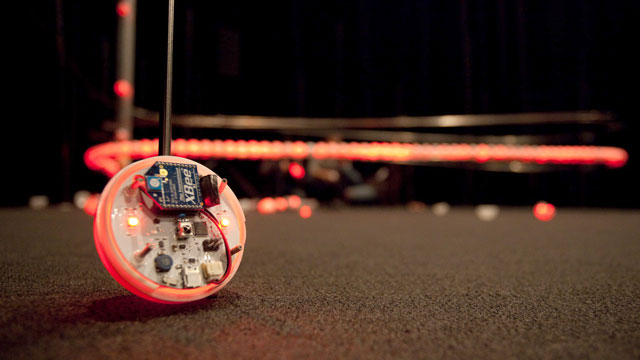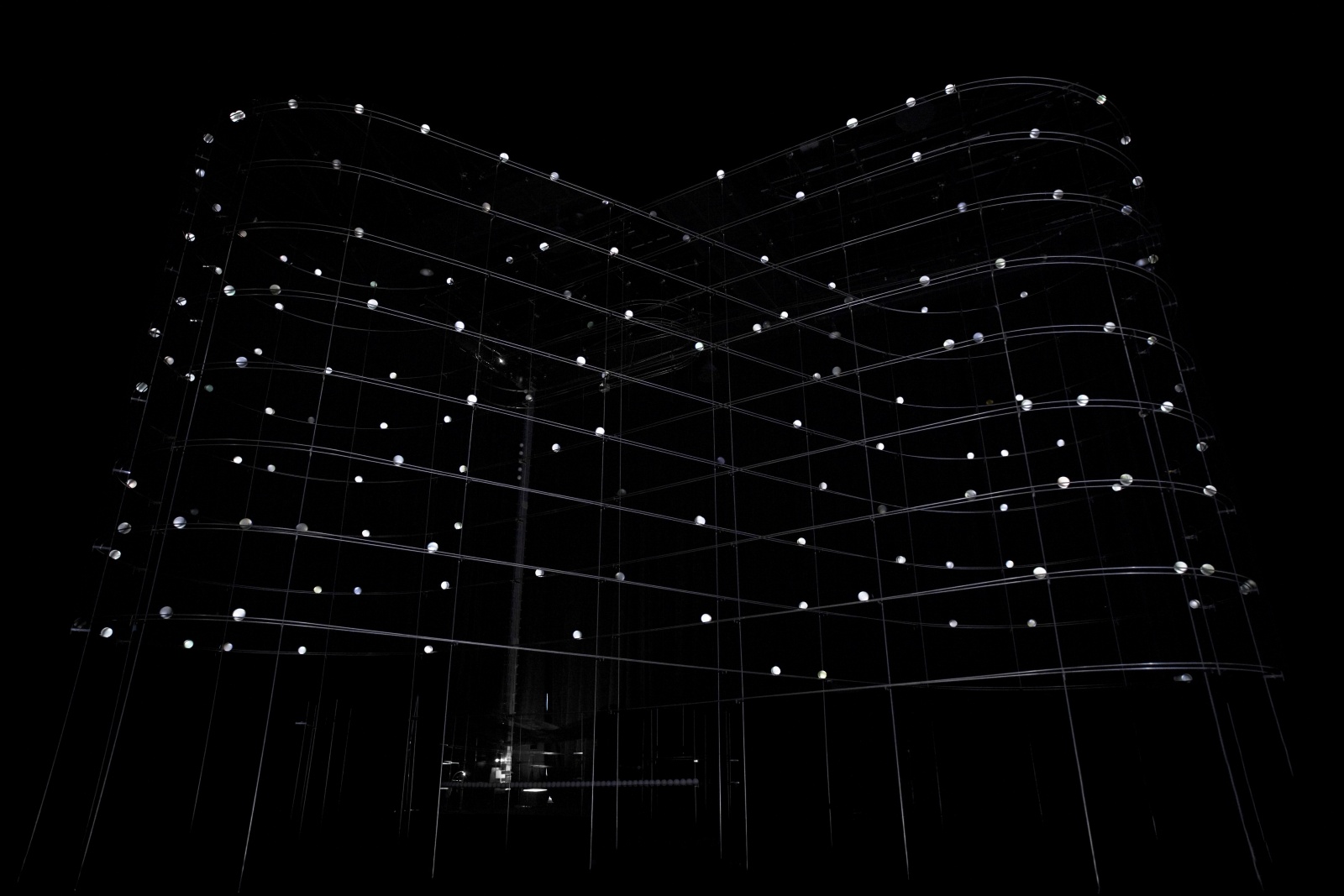Daito Manabe and Motoi Ishibashi Making Particles Dance
The sound and light installation ‘particles’ by the artist duo is a sensitive and emotional journey guided by technology.

‘particles’ (2011) © Yamaguchi Center of Arts and Media
Artists, programmers, DJs, designers, engineers—this duo expertly masters the codes and techniques of new medias. Presented for the first time in 2011 at the Yamaguchi Center of Arts and Media (YCAM) in Tokyo, the installation particles (2011) brings the audience into a world of neo-kinetic participative art.
Born in the middle of the 1970s in Tokyo, Daito Manabe and Motoi Ishibashi have risen to fame with their innovative work. For example, they manipulate their faces with MIDI controllers and their voices with Kinect. They are the directors of Rhizomatiks Research, an organisation dedicated to experimental projects within the domains of interactive conception and the digital. particles (2011) is 3.29 minutes long and won an award for distinction in the interactive art category at the Prix Ars Electronica in Linz, Austria, an esteemed recognition in the digital art world.
The audience calls the shots
The installation is a live experience determined by choices made by the audience. They are able, via an interface, to guide LED balls in order to form drawings as they move.
When coming across the work at the Voyage festival in Nantes in 2012, art critic and curator Dominique Moulon highlighted the ‘immediacy of our relationship to the work, adapted to multiple interpretations for those who wish to go beyond pure contemplation.’
While the work of the duo is unique for its technical dimension, there is also consistant attention paid to the interaction between the audience and the use of technology in order to offer new experiences. For example, Daito Manabe and Motoi Ishibashi also realised Music for the Deaf, a performance where deaf dancers seem to evolve with the music thanks to tactile stimuli.
particles (2011), is an installation by Daito Manabe and Motoi Ishibashi and can be found on their website.

‘particles’ (2011) © Yamaguchi Center of Arts and Media

‘particles’ (2011) © Yamaguchi Center of Arts and Media

‘particles’ (2011) © Yamaguchi Center of Arts and Media

‘particles’ (2011) © Yamaguchi Center of Arts and Media
TRENDING
-
The Tattoos that Marked the Criminals of the Edo Period
Traditional tattoos were strong signifiers; murderers had head tattoos, while theft might result in an arm tattoo.

-
Chiharu Shiota, Red Threads of the Soul
Last year, more than 660,000 people visited the retrospective 'Chiharu Shiota: The Soul Trembles' exhibit at the Mori Art Museum.

-
‘Before Doubting Others, Doubt Yourself. Who Can Truly Say a Dish Isn’t What It Used to Be?’
In ‘A Non-Conformist’s Guide to Surviving Society’, author Satoshi Ogawa shares his strategies for navigating everyday life.

-
The Story of Sada Yacco, the Geisha who Bewitched Europe
Described by Dazed magazine as the first beauty influencer, she has been restored to her former glory since 2019.

-
Ito Jakuchu's Naturalist Paintings
From 15 September until 14 October 2018, the Petit Palais showcased the artist's iconic ‘Images of the Colourful Realm of Living Beings’.





